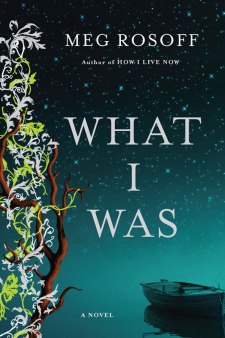 At the cusp of adulthood, we are all looking for one thing: identity. Some find it quickly, while others linger in a fog of confusion. Meg Rosoff captures this enigmatic aspect of life with a powerful and emotional tale of self-discovery and friendship.
At the cusp of adulthood, we are all looking for one thing: identity. Some find it quickly, while others linger in a fog of confusion. Meg Rosoff captures this enigmatic aspect of life with a powerful and emotional tale of self-discovery and friendship.
Near the end of his life, “H” reflects on his troubled youth. Bouncing from one boarding school to another, he finally lands at St. Oswald’s on the eastern coast of Britain. Despite being well aware that this is his last chance to prove to his parents he can rise to their expectations, he questions whether his path in life involves learning Latin, mastering maths, and wallowing in a second-rate boys school. H is lost in a world constantly trying to force him into a life of conformity and he has yet to decide if he will join the masses or step outside the box.
Framing H’s dilemma is a beautifully crafted atmosphere of fog, chilly wind, mist and gray skies. Rosoff brilliantly allows the scenery to mirror the melancholy and isolation breathing inside of H as he struggles with the pain of growing up. The drab walls of St. Oswald’s could almost be the pale skin of a young man trying to find his place in the world.
As the tide begins to shift, so does the trajectory of H’s existence. One day, while walking on the beach, he meets Finn. What follows is an infatuation that drives H to break every rule in order to spend time with the young man who lives in a hut on the shoreline.
Finn is beautiful and everything H wants to be. Independent. Alone. Free. H’s emotions are intense and all-consuming, but much like everything else in his life they are hard to define. The question of whether it is love, friendship, or envy is never answered, as H himself is unable to sort through the feelings driving his connection to Finn.
The relationship between H and Finn grows into one of comfort of companionship, but forces beyond their control pull them in different directions. Both find themselves fessing up to truths they’d rather forget and making choices that can’t be avoided. While this sounds like a typical coming of age story, Rosoff crafts a brilliant twist ending that leaves both H and the reader with a surprise neither saw coming.
Final Verdict: On goodreads, I gave this book (a rare) 5 stars. If it’s not on your shelf, if should be.
– – –
c.b.w. 2014



